Dalmatia to Mostar and on to Dubrovnik
Posted on October 4,2018 By John Compisi

Our most excellent European Vacation continued as we sadly said good bye to the beautiful islands of Hvar and Korčula. We took the Jadrolinija for a short ferry ride back to the mainland of Croatia. To break up the journey we stopped in the walled city of Ston, which is two cities, southern Ston and Mali (little) Ston, connected by a 1200-meter-long great wall built on orders from the Dubrovnik Republic between 1461 and 1464 AD. The wall was built to protect the important salt production that remains today in Ston. Although much of the original 7000 meters were destroyed over time by 3 major earth quakes, parts have been reconstructed and are open to the public. We didn’t do that as our schedule would not allow it. We had a quick lunch and continued to Mostar.
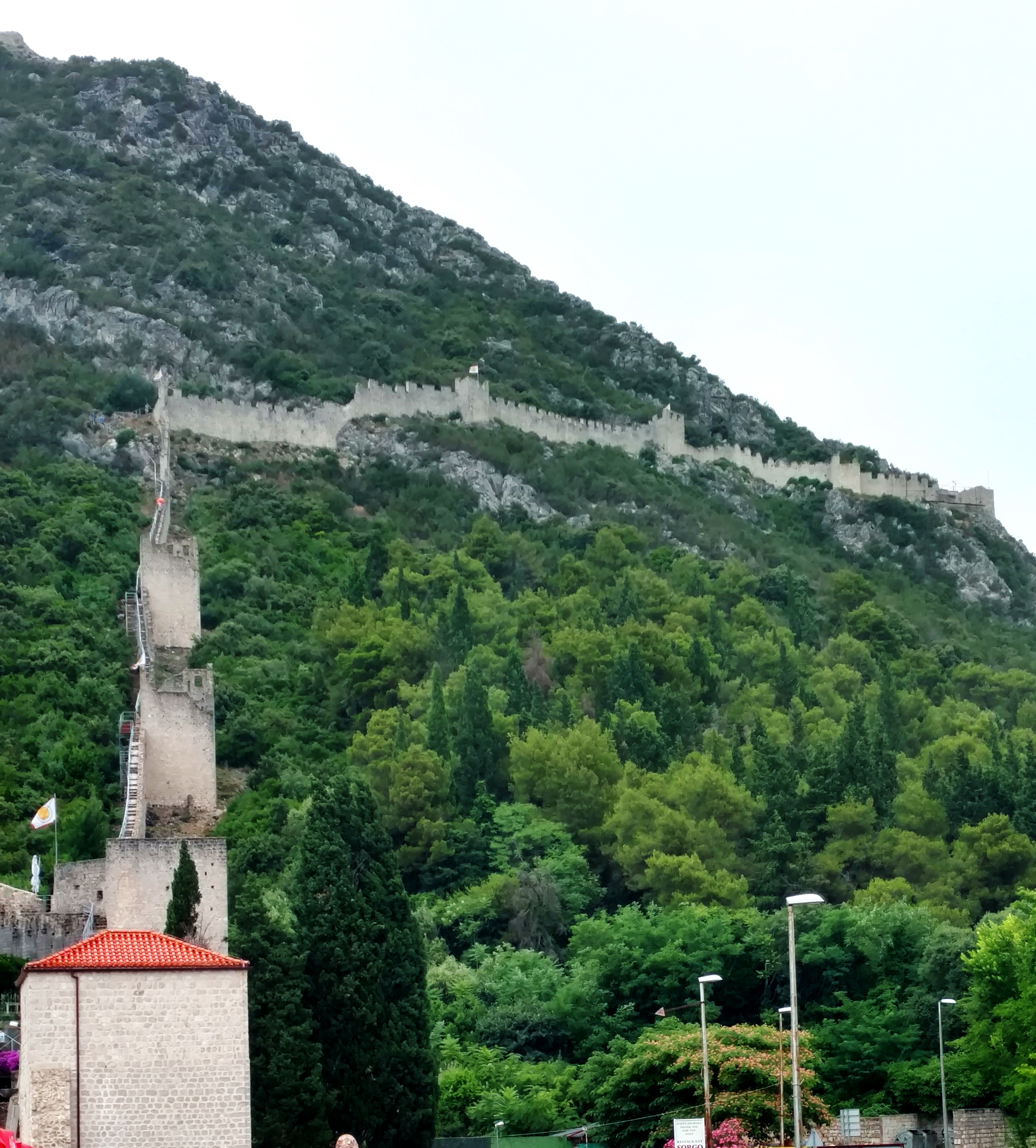 The Great Wall of Ston c. 15th Century (L.Compisi)
The Great Wall of Ston c. 15th Century (L.Compisi)
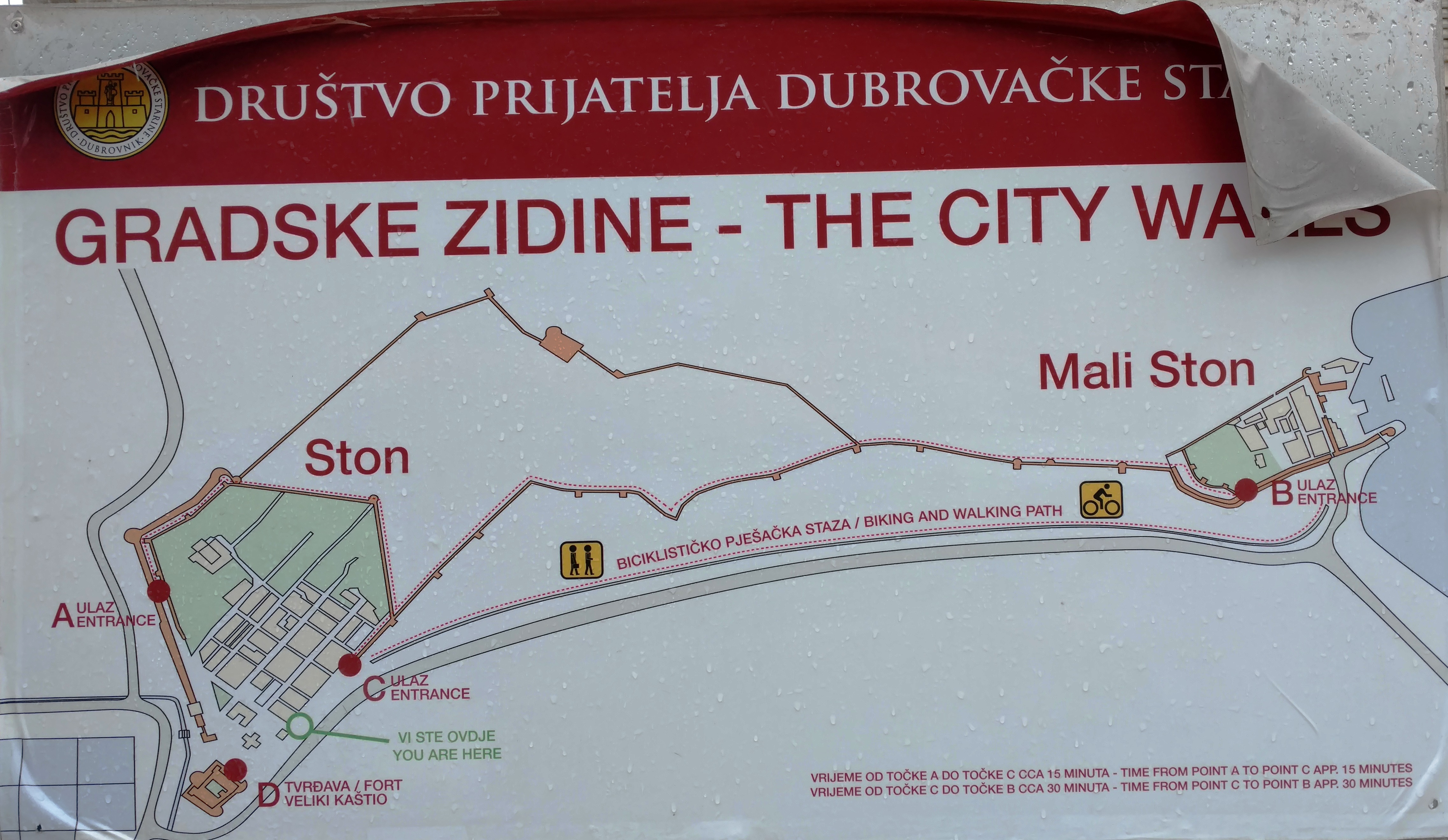 City Plan for Ston and Mali Ston (L.Compisi)
City Plan for Ston and Mali Ston (L.Compisi)
The journey from Ston to Bosnia-Herzegovina included a rather invasive border crossing with trucks and buses lined up waiting to be cleared. Once through we continued inland away from the Adriatic to Mostar. The distance is just over 100 kilometers and took us about 2.5 hours considering the border crossing. It is sad to say that among the former Yugoslavian countries we have visited (Slovenia, Croatia and Bosnia-Herzegovina), Bosnia appears to have recovered the least from the wars of ethnic cleansing in the early 1990s. Perhaps because of the complicated system of government, and some say political corruption, the country remains the least economically viable of the former Balkan countries.
 Bombed out home remains unrestored (L.Compisi)
Bombed out home remains unrestored (L.Compisi)
The evidence is clear that rebuilding of bombed out homes and businesses has not fully occurred even 23 years after the peace agreement, referred to as the Dayton Peace Accords, were signed in late 1995. Although the bloodshed was ended the agreement allows for a tripartite Presidency. Yes, that’s three presidents, one Bosniak (Muslim), one Serb (Serbian Orthodox) and one Croat (Roman Catholic). The Parliament follows a similar ethnic makeup as does the Council of Ministers. Leave it to say, as they rotate through power their main goal seems to be keeping power thereby maintaining the status quo. Oh yes, meant to mention that Bosnia and Herzegovina are two entities: The Federation of Bosnia and Herzegovina and the Republika Srpska, with significant internal autonomy.
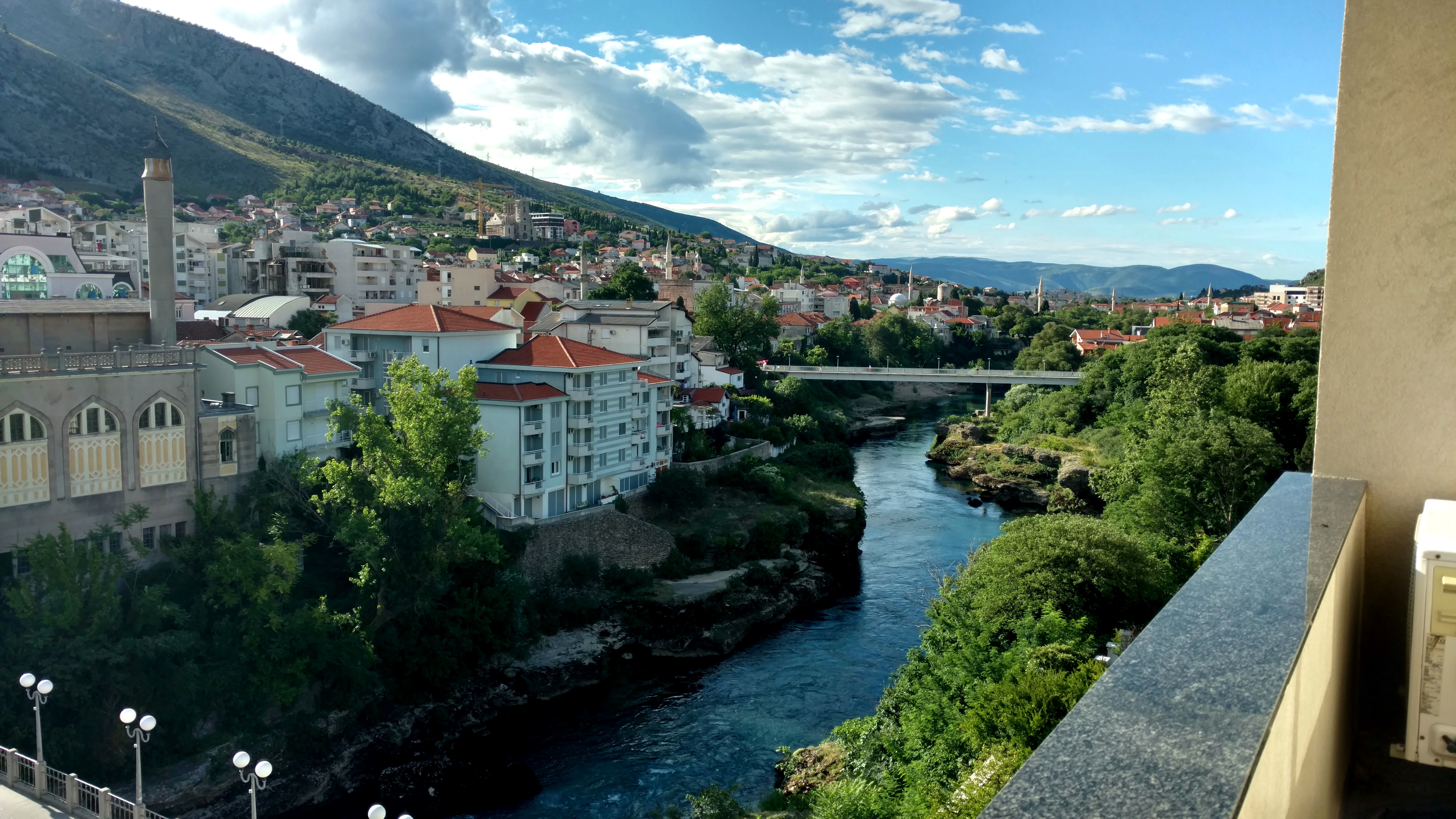 Daytime view of Mostar and the Neretva River from our hotel (L.Compisi)
Daytime view of Mostar and the Neretva River from our hotel (L.Compisi)
 Night time view of Mostar and the Neretva River from our hotel (L.Compisi)
Night time view of Mostar and the Neretva River from our hotel (L.Compisi)
Sorry, got a little off track there. Once we arrived in Mostar we checked into our hotel. The hotel was right on the Neretva River and offered pretty views of the City and surrounding hills as well as easy access to the old city. Mostar offers a fascinating and unique multi-cultural blend of south Slavic, Ottoman-Turkish and Mediterranean traditions. The food and architecture in various parts of the city reflect this. We used a local guide whose family had suffered greatly during the war. She took us on a very thought provoking walk and discussed the siege of Mostar. We visited Mosques, an Ottoman-Turkish home, the quite beautiful and restored Stari Most Bridge (circa 16th Century), the Kujundžiluk Bazaar and had a truly delicious dinner at Sadrvan, an Otto Turkish restaurant. The city is filled with minarets and the occasional church.
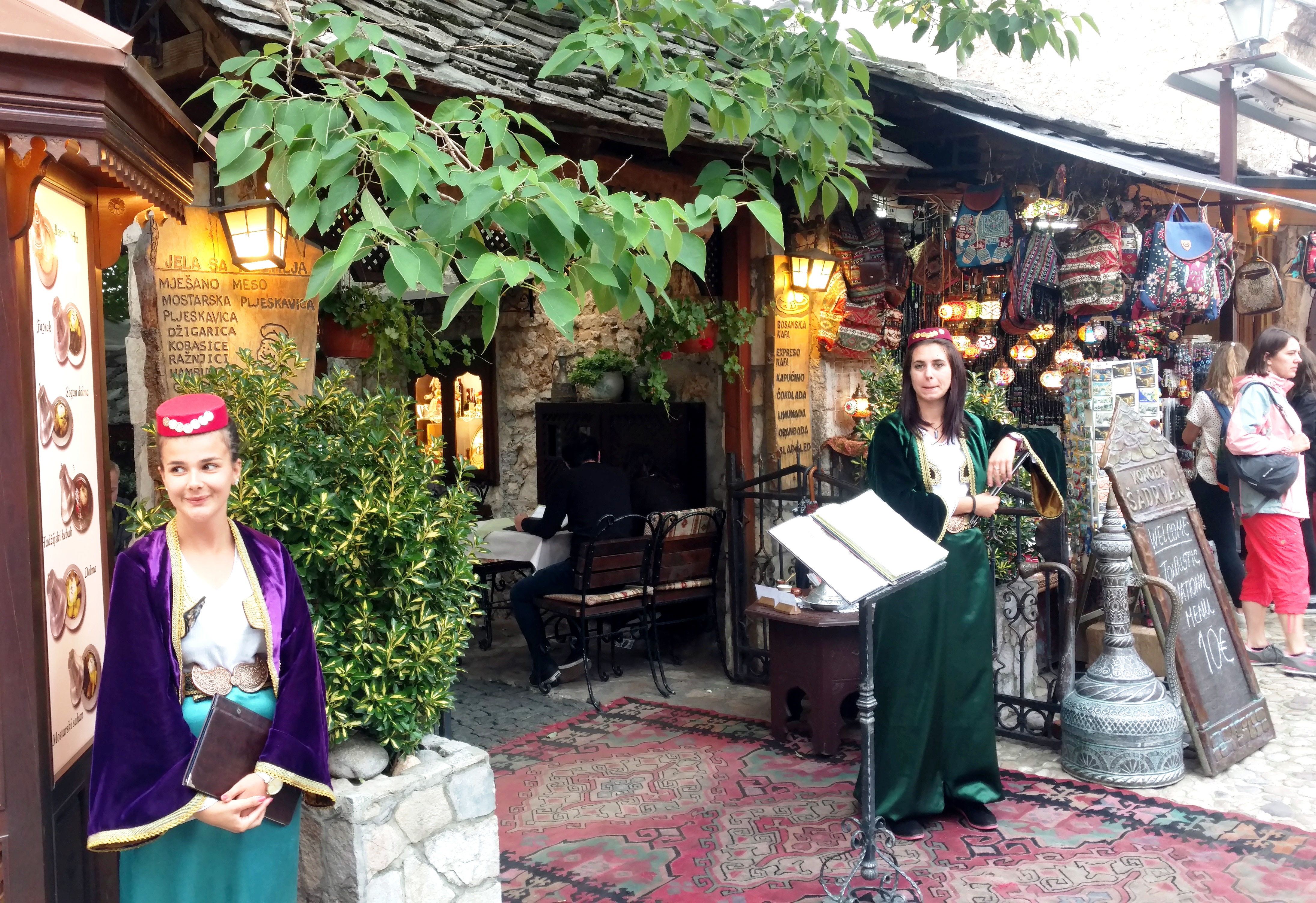 Restaurant Sadrvan offered delicious traditional Turkish fare (L.Compisi)
Restaurant Sadrvan offered delicious traditional Turkish fare (L.Compisi)
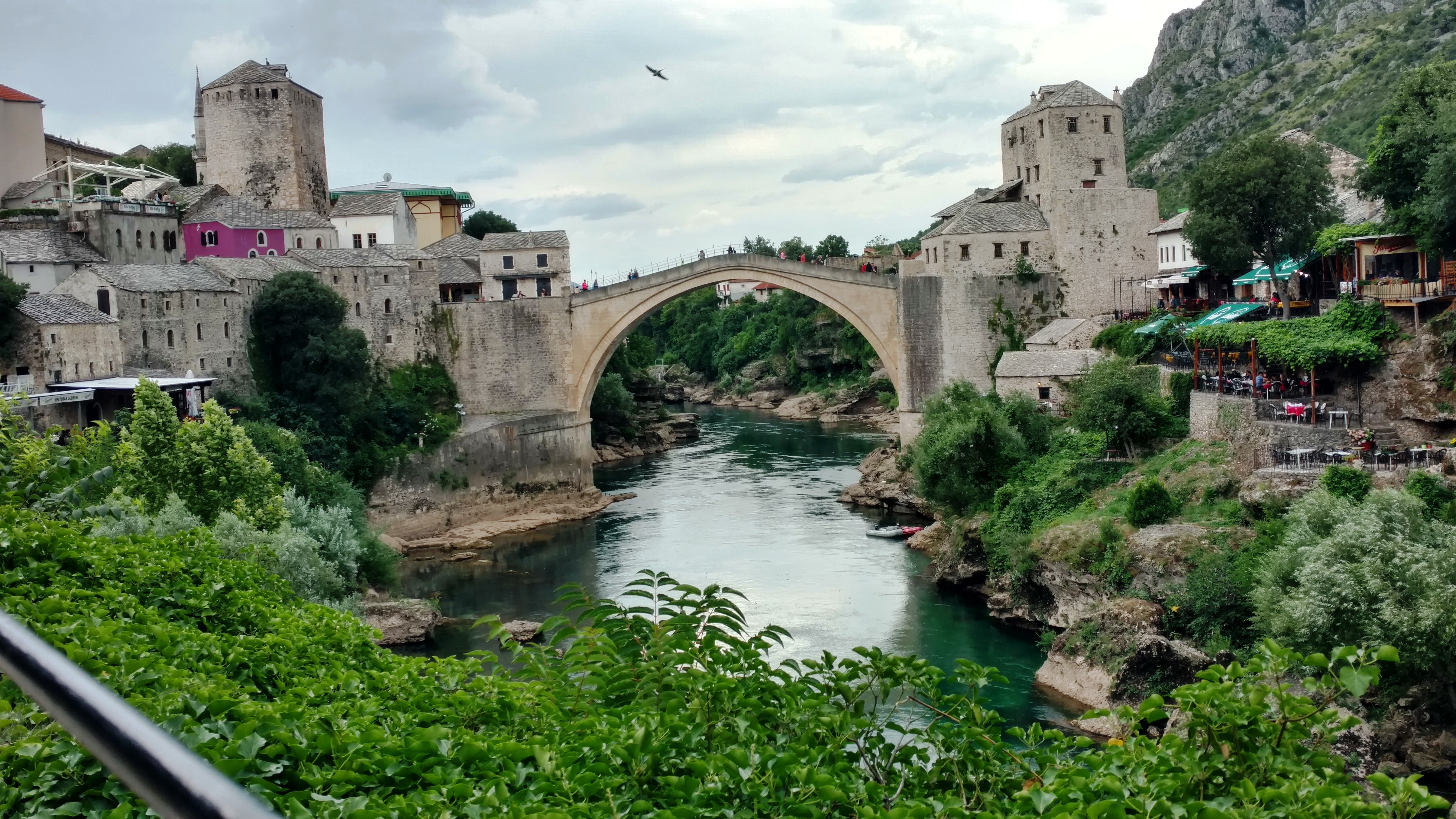 Picturesque Stari Most Bridge in its latest incarnation (L.Compisi)
Picturesque Stari Most Bridge in its latest incarnation (L.Compisi)
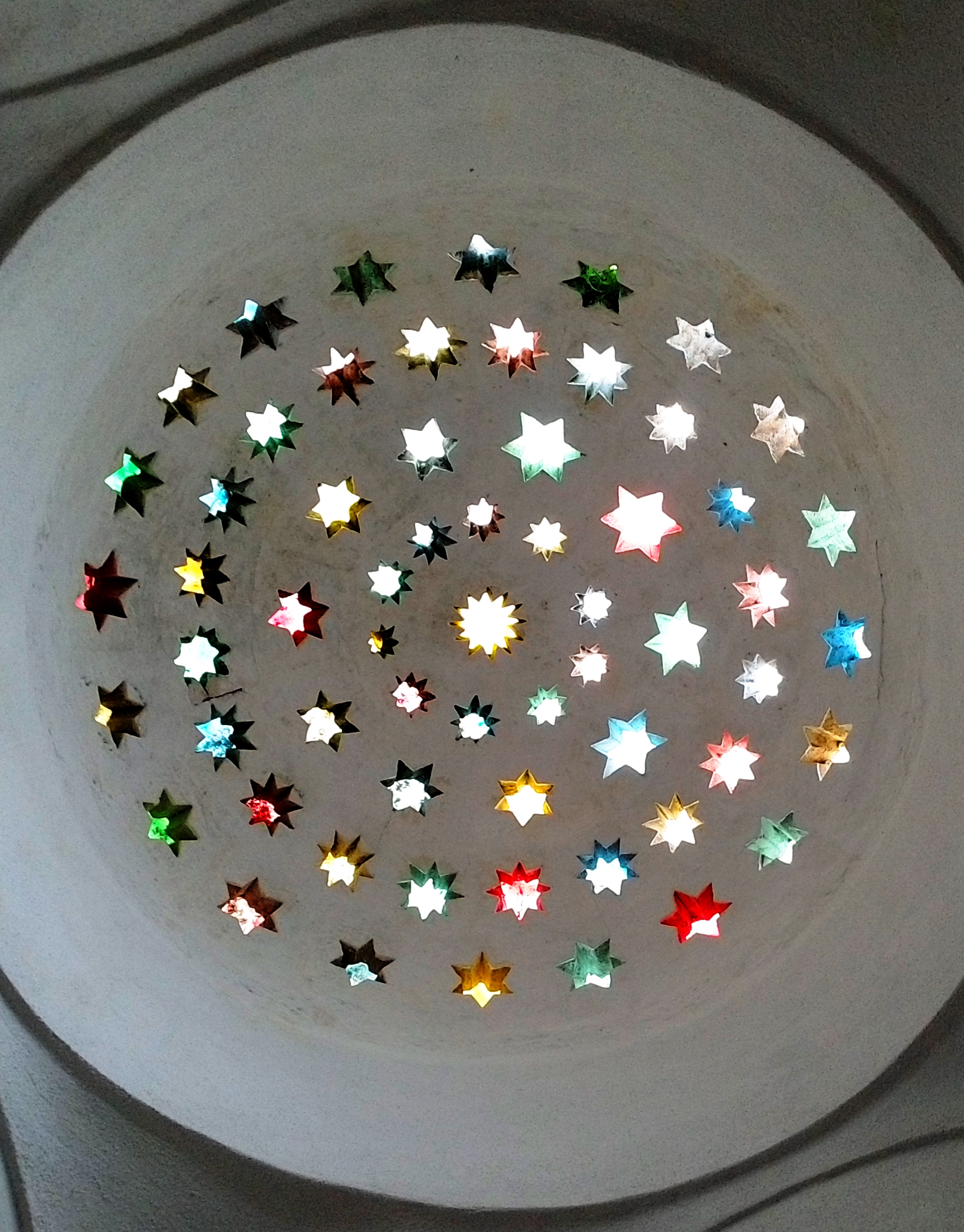 The dome of Koski Memed Pasha Mosque (L.Compisi)
The dome of Koski Memed Pasha Mosque (L.Compisi)
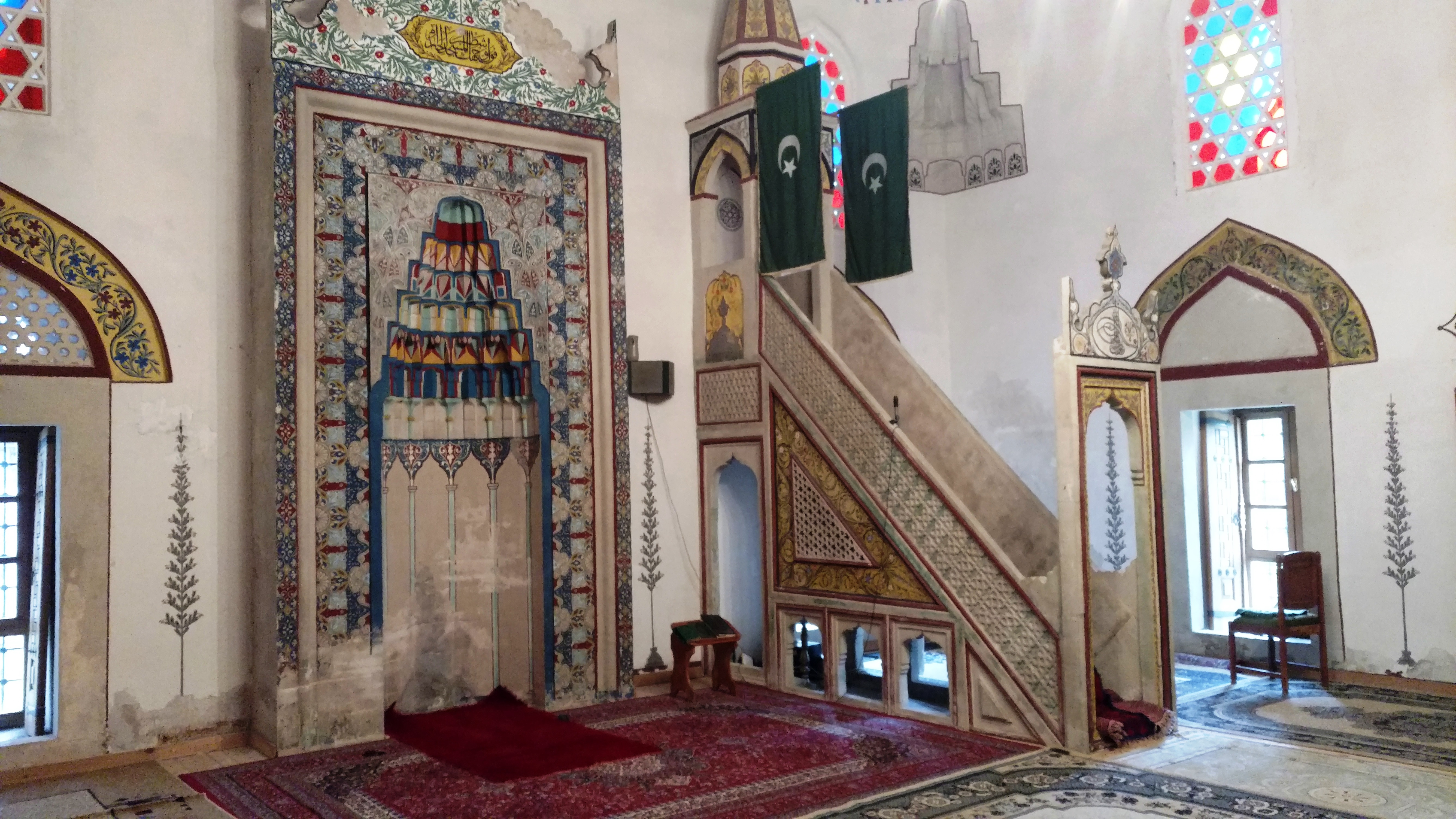 Interior of Koski Memed Pasha Mosque (l.Compisi)
Interior of Koski Memed Pasha Mosque (l.Compisi)
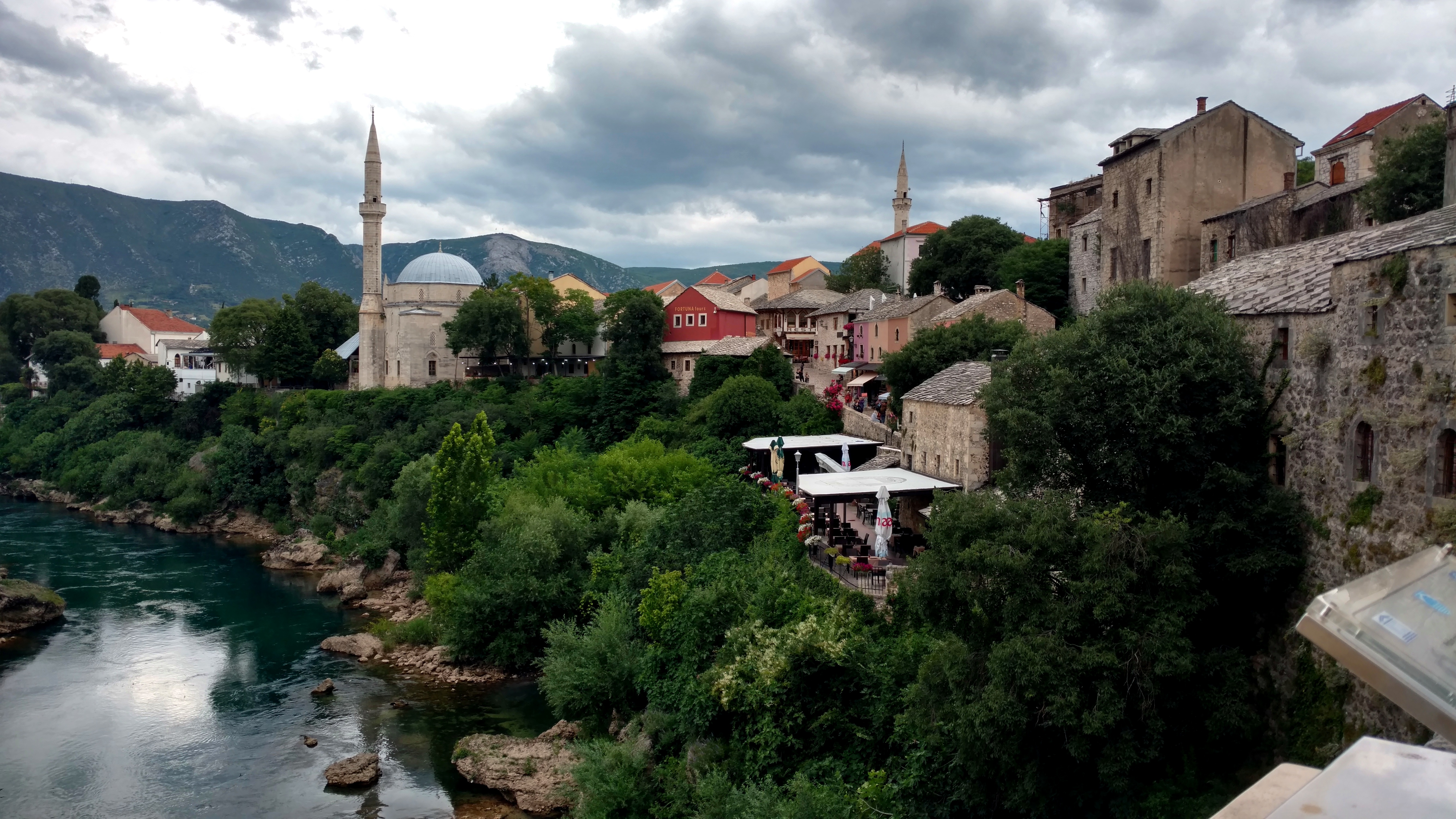 Minarets dot the Mostar skyline (L.Compisi)
Minarets dot the Mostar skyline (L.Compisi)
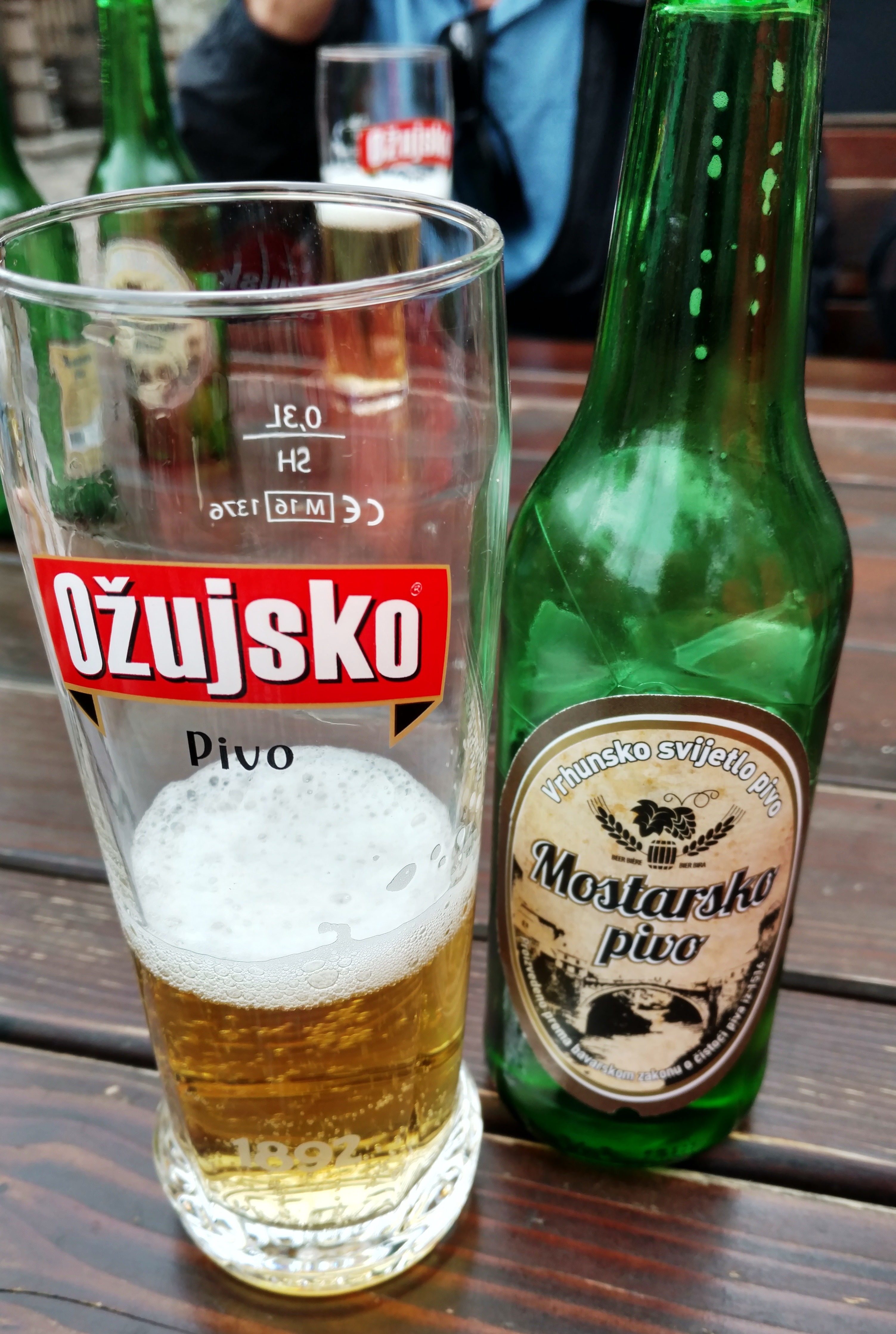 Mostar Pivo (Beer) was very good (L.Compisi)
Mostar Pivo (Beer) was very good (L.Compisi)
Mostar has a population of about 115k people and is quite walk-able. To compare, Sarajevo, the Capital, has about 300k people. Tourism, despite the reminders of the ravages of war and the complexity of its governmental system, is on the rise, reportedly one of the fastest in World.
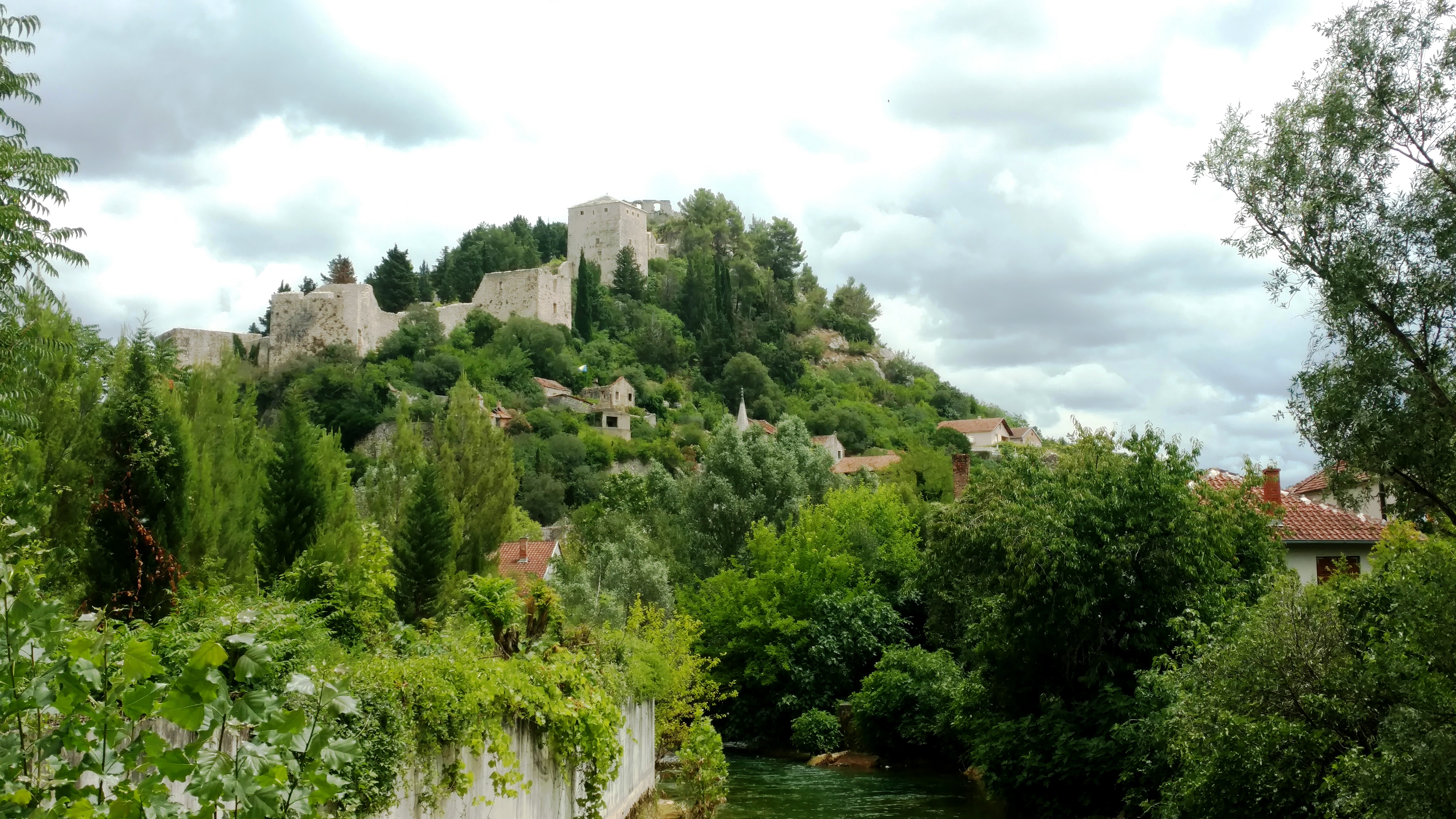 Stolac is quaint, beautiful and a very special place (L.Compisi)
Stolac is quaint, beautiful and a very special place (L.Compisi)
 The Bregava River adds to Stolac’s charm (L.Compisi)
The Bregava River adds to Stolac’s charm (L.Compisi)
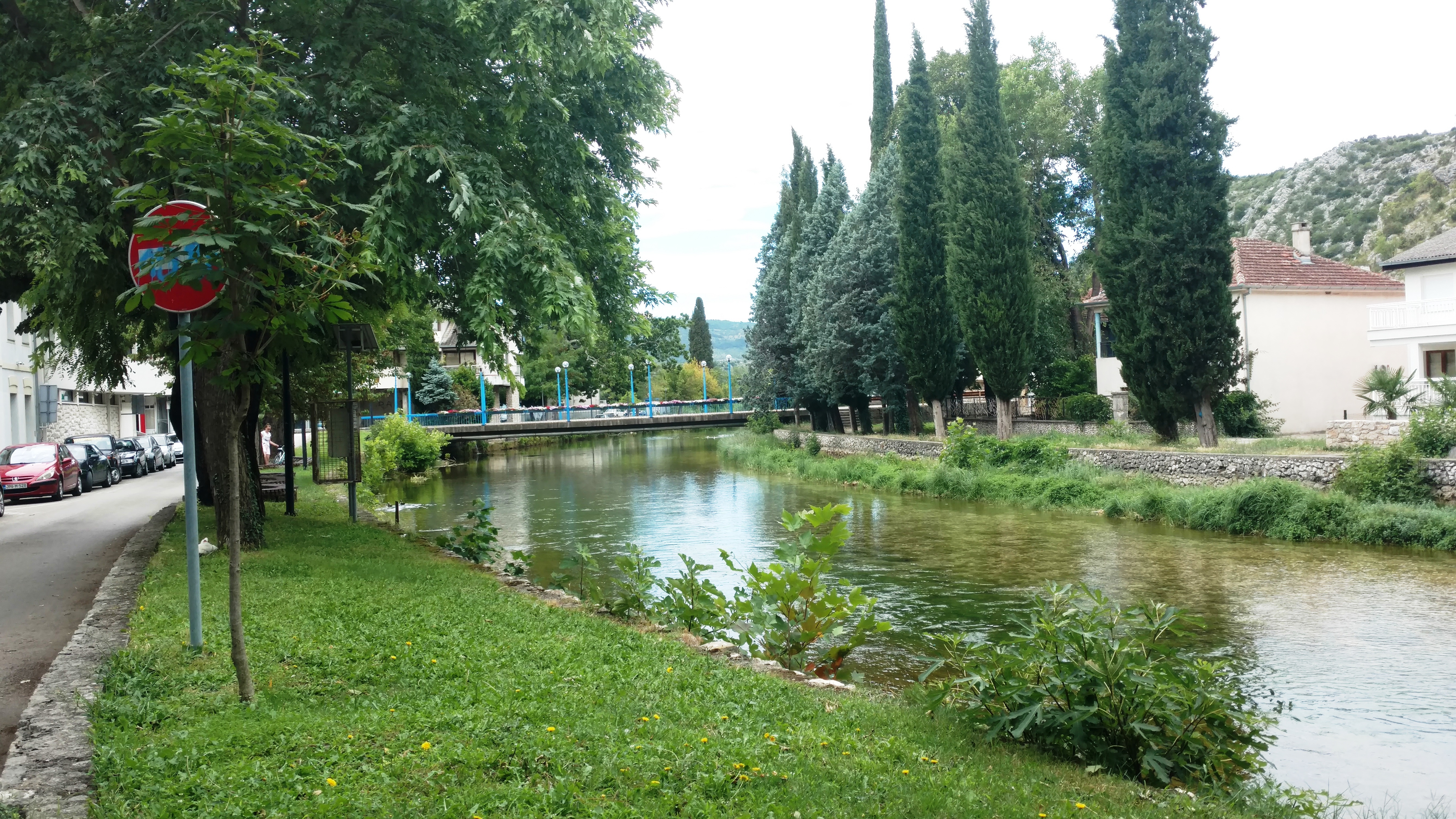 Stolac offers history, charm and tranquility (L.Compisi)
Stolac offers history, charm and tranquility (L.Compisi)
Upon departing Mostar, we headed to Dubrovnik but not without brief stops in Stolac and the Radimlja Necropolis, both in the valley of the Bregava River. The ride was unusually beautiful with vineyards and great fertile fields of general agriculture. Stolac was replete with amazing architectural gems. The area has been settled by various peoples for over 15,000 years. The Radimlja Necropolis of stećaks (medieval tombstones) have monuments inscribed as early as 1151 and 1178 AD.
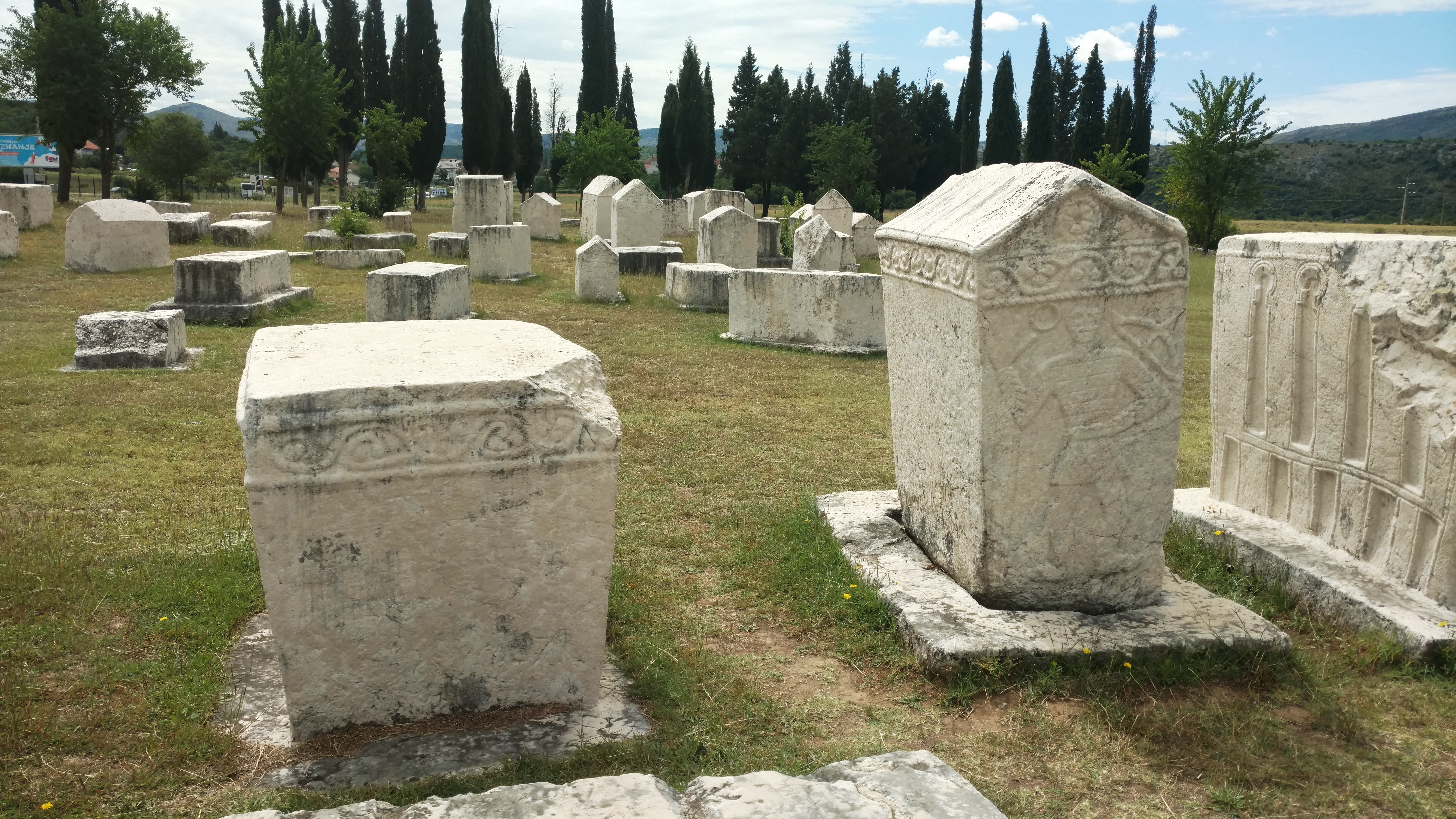 The stećaks of Radimlja Necropolis whispered of peoples and times gone by (L.Compisi)
The stećaks of Radimlja Necropolis whispered of peoples and times gone by (L.Compisi)
Continuing westbound toward the Adriatic and Dubrovnik we had a tour and tea at the Dervish (Sufi) Monastery in Blagaj Tekke and made a brief visit to the Serbian Orthodox Žitomislić Monastery. Žitomislić has been destroyed and rebuilt at least five times (most recently in 2002) since its original construction between 1566 and 1606.
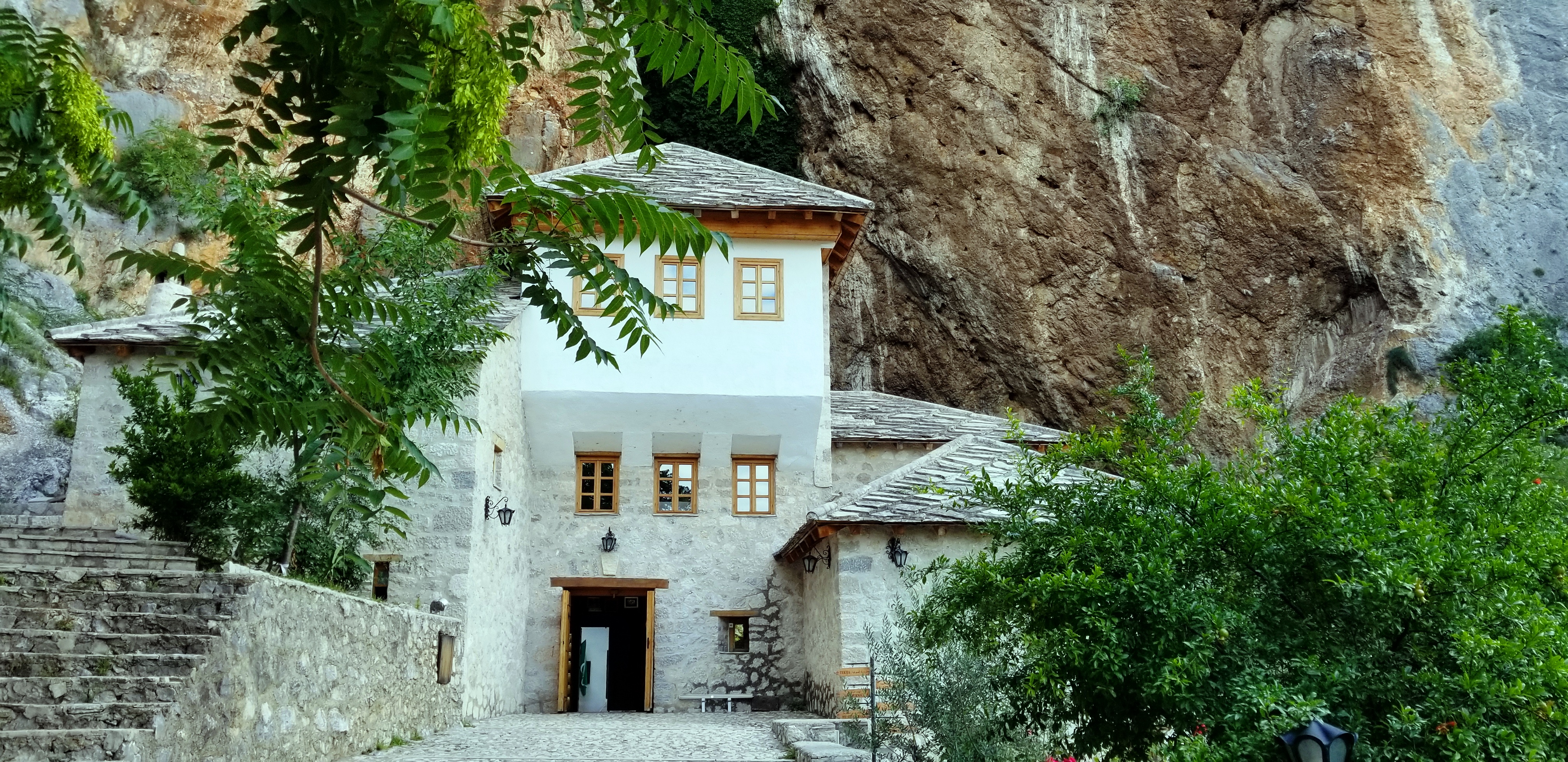 The Dervish (Sufi) Monastery, Blagaj Tekke required head scarfs for ladies (L.Compisi)
The Dervish (Sufi) Monastery, Blagaj Tekke required head scarfs for ladies (L.Compisi)
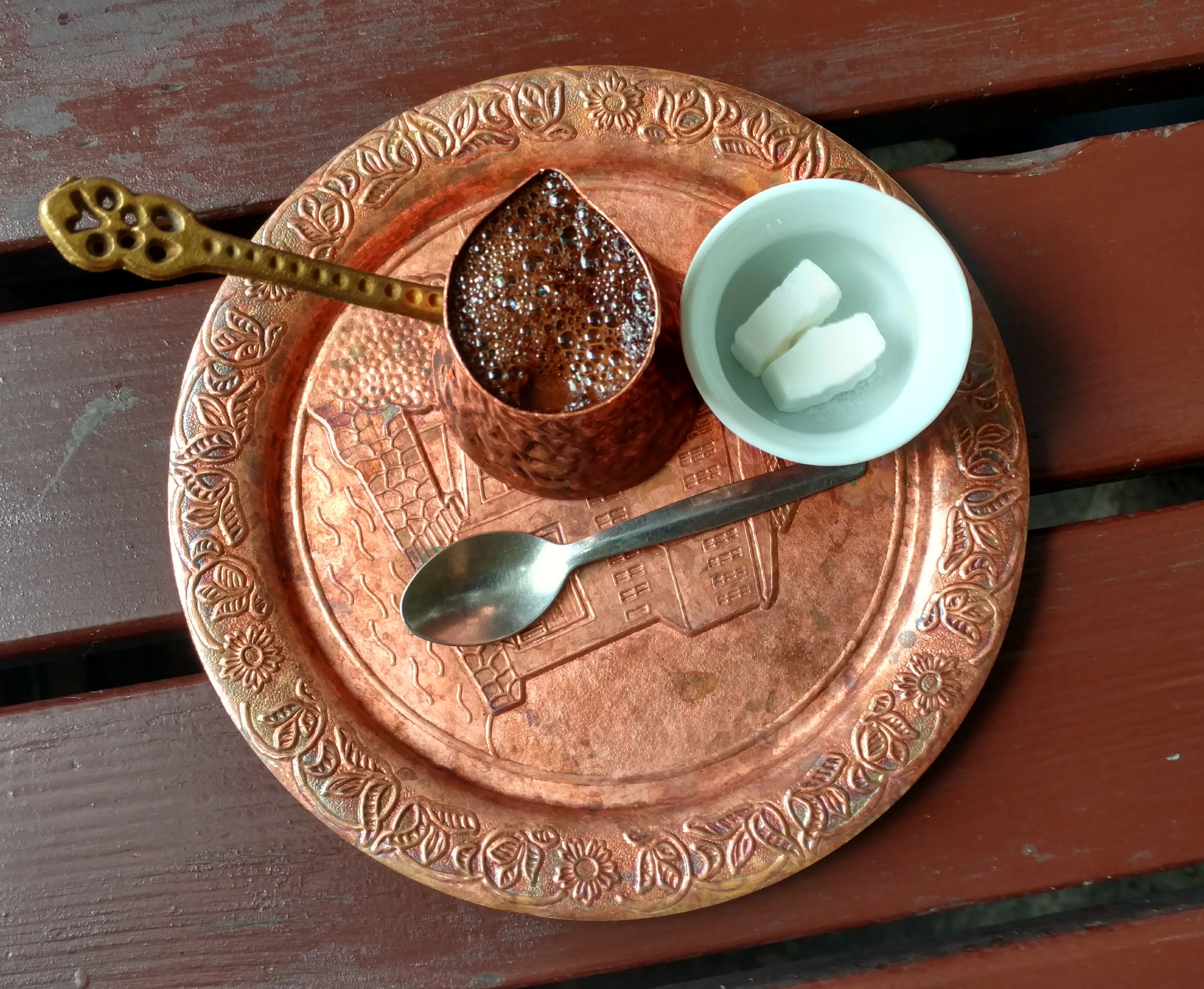 The traditional tea service was memorable at Blagaj Tekke (L.Compisi)
The traditional tea service was memorable at Blagaj Tekke (L.Compisi)
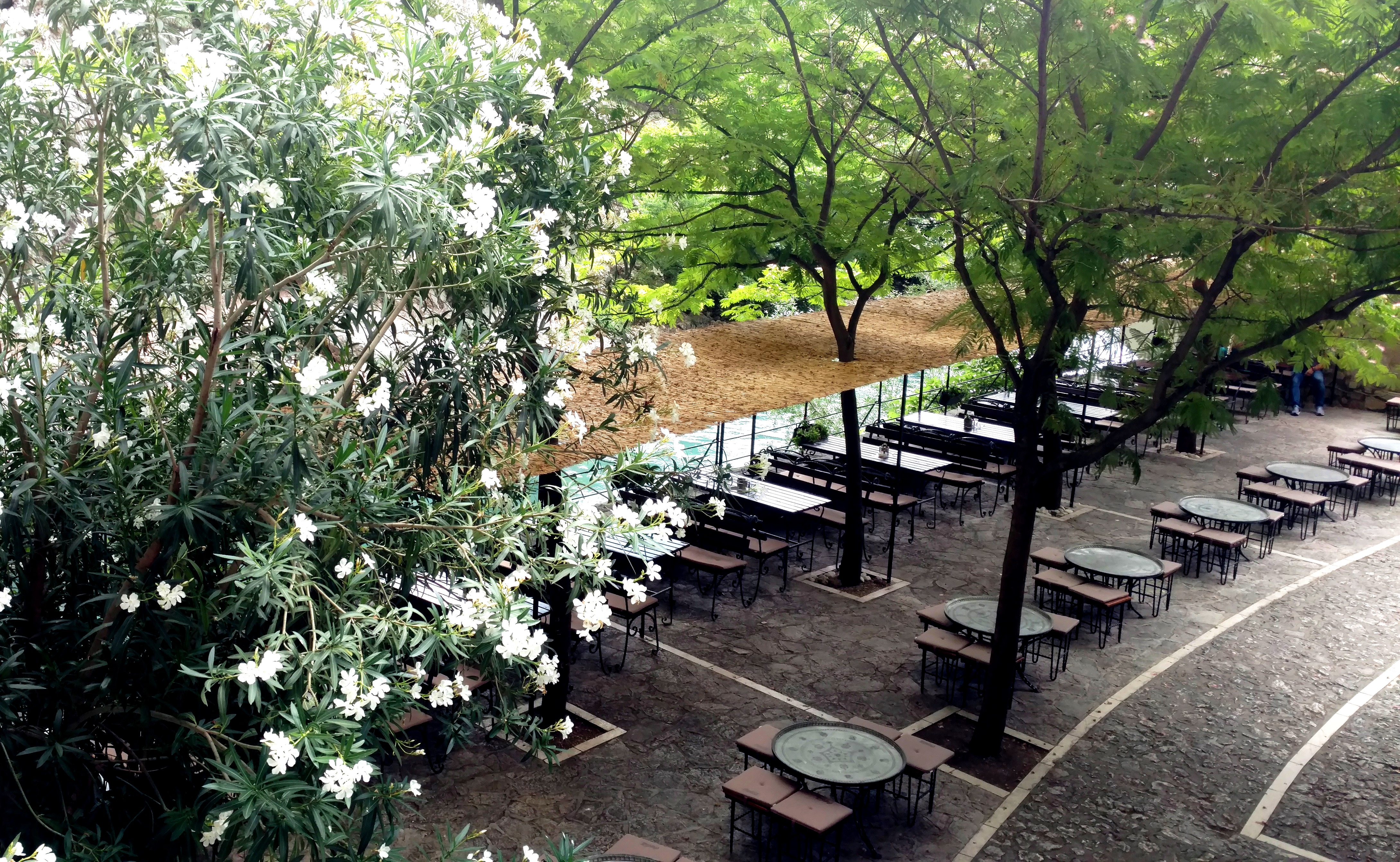 The Blagaj Tekke Court Yard was surprisingly empty (L.Compisi)
The Blagaj Tekke Court Yard was surprisingly empty (L.Compisi)
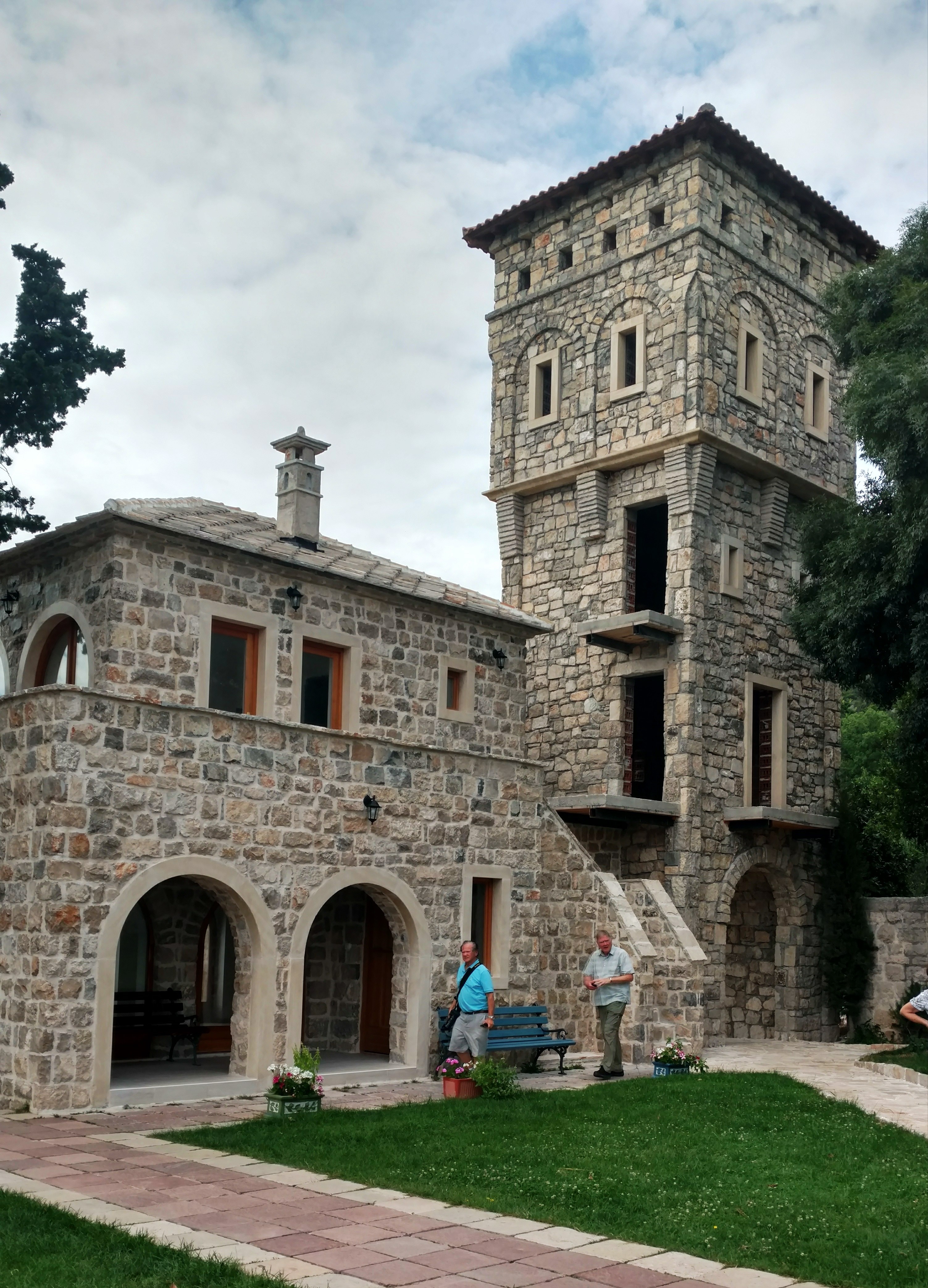 The building and grounds at Žitomislić Monastery (L.Compisi)
The building and grounds at Žitomislić Monastery (L.Compisi)
 The religious art on the ceiling and walls were breathtaking at Žitomislić (L.Compisi)
The religious art on the ceiling and walls were breathtaking at Žitomislić (L.Compisi)
There is a great deal of beauty and history in this tumultuous land called that is so worth exploring. One of the benefits of travel is to see what other people and countries are doing and what is working and what is not. Maybe we were on to something when ‘E Pluribus Unum’ was first considered for the American Motto on the Great Seal of the United States in 1776. Perhaps in the next 25 years Bosnia-Herzegovina can surmount the ethnic divisions that appear to be holding it back.
Next up, a delightful 2 days in Dubrovnik!